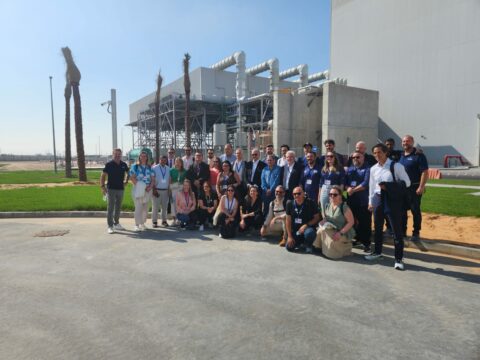CSI
Independent Power Performs
South Africa’s Renewable Energy Independent Power Producer Programme (REIPPP) – which has been lauded throughout the world as a unique model for delivering on a triple bottom line of economic, developmental and environmental benefits for the country – had attracted private-sector commitments of R192bn only four years after the first request for proposals (RFP) went to market. This included foreign investment of R53,2-billion.
After four rounds of bidding – between August 2011, when the first RFP was issued, and April 2015, when the last round was concluded – the Department of Energy (DoE) received 305 bids for 17.5 gigawatts (GW) of renewable energy. It selected 92 independent power producers (IPPs) to generate 6.3GW of renewable energy.
According to a DoE report, The State of Renewable Energy in South Africa, “By the end [of] June 2015, 37 IPPs had already started commercial operations, adding 1 860MW [of] capacity to the power system – 4% of the total installed capacity in the country – within 2.5 years. Construction lead times for completed projects have averaged between 15 months and two years, delivering operational capacity to the system within relatively short time frames.”
The report states that the majority of projects have been delivered on time (or within a reasonable window), and within budget. “The REIPPP is the fastest-growing renewable energy programme in the world and one of the largest programmes in the country’s current infrastructure development portfolio. South Africa is on track to achieve its objective of 30% clean energy by 2025,” the report says.
A World Bank report, South Africa’s Renewable Energy IPP Procurement Program: Success Factors and Lessons, evaluated the programme’s achievements after the third round of bidding, quoting an investor who described the REIPPP as the most successful public-private partnership in Africa over the last two decades: “Since 2012, South Africa has ranked among the top 10 countries globally in terms of renewable energy IPP investments. In less than three years, South Africa has signed up more investment, for more independent power generation, than has been achieved across the entire African continent over the past 20 years.”
The REIPPP also achieved a balance between economic, financial and developmental objectives. The DoE’s bid evaluation criteria allocated a 70% weighting to price and 30% to economic development requirements. These included local content, local community development (for beneficiaries within a 50km radius of the project site), job creation, ownership, management control and preferential procurement.
During each bid window, average prices declined while economic development requirements became more stringent. By the end of the fourth window, average prices had dropped by 68%. But some of the local content targets had increased to 65% from 50%. The projects achieved an average of 10.5% community participation in ownership, which was above the target of 2.5%.
Amazingly, a divine intervention some would say, South Africa’s most favourable renewable energy resource endowments are located in the country’s most remote and poor areas, which desperately need investment and employment. Most projects are located in the rural areas of the Northern, Eastern and Western Cape, which have attracted investment commitments of R174-billion, or 91% of the country’s total.
The projects in the three areas will create an estimated 93 600 employment opportunities, which is 87% of the national total of 107 000. They will also generate socioeconomic development (SED) contributions to local communities of R88,9-billion, or 98% of the national total. Gauteng, the richest province, only received investment commitments of R300-million, or 0.2% of the country’s total.
The Northern Cape, which offers the most favourable solar-radiation levels, attracted 48 of the 92 IPP projects, which made investment commitments of R126,6-billion, or 66.1% of the country’s total.
The projects will create 65 220 employment opportunities, equivalent to 60% of the country’s total, and generate SED contributions of R11,8-billion.
Once construction has been completed, the Northern Cape is expected to produce 3.6GW, or 57% of the country’s total procured renewable-energy capacity.
The Eastern Cape attracted 17 of the 92 projects, which made investment commitments of R33,7-billion, or 17.6% of the country’s total. Once construction has been completed, the province is expected to produce 1.5GW, or 24% of the country’s total procured renewable-energy capacity.
The province has excellent conditions for the generation of on-shore wind power. Therefore, 16 of the 17 projects are for the generation of this kind of power. These projects account for 43% of the country’s total procured wind power, and will create 18 132 jobs and SED contributions of R74,5-billion.
The Western Cape attracted 11 of the 92 projects, which made investment commitments of R13,7-billion. Once construction has been completed, the province is expected to produce 0.6GW, or 9.5% of the country’s total procured renewable-energy capacity. This will comprise six wind (458MW) and five solar PV (134MW) projects.
The DoE report says that the remaining 16 projects are distributed among the other provinces, with the Free State and the North West sharing five projects between them. Limpopo has three projects. There is one IPP project per province in Mpumalanga and Gauteng.
Bronkhorstspruit Biogas Plant
Of the 92 independent power producer contracts awarded by government following the recent bidding process, only one was in Gauteng. The Bio2Watt plant in Bronkhorstspruit, east of Pretoria, is the first commercial-scale biogas project in South Africa. The plant is situated on a feedlot and processes mixed waste, including primarily manure, paper sludge, fruit and vegetables, plus abattoir waste streams. The project faced a lengthy road to completion due to being the first of its kind in the country; legal frameworks, licencing and permits had to be established anew, and various stakeholders were initially sceptical of the technology.
Biogas energy production involves converting agricultural or other organic waste into a renewable-energy source. This has the dual effect of reducing both waste and reliance on the conventional energy sources. The Southern African Biogas Association estimates that biogas could contribute 2.5 gigawatts of capacity to South Africa. To date, however, this resource has seen limited implementation throughout South Africa. A national strategy was recently drafted to support the industry and to leverage more effectively the possibilities that it offers. Hopefully, the Bio2Watt Bronkhorstspruit Biogas Plant, and the lessons learned in implementing it, will spearhead the creation of similar plants around the country.






 Sign-up and receive the Business Media MAGS newsletter OR SA Mining newsletter straight to your inbox.
Sign-up and receive the Business Media MAGS newsletter OR SA Mining newsletter straight to your inbox.